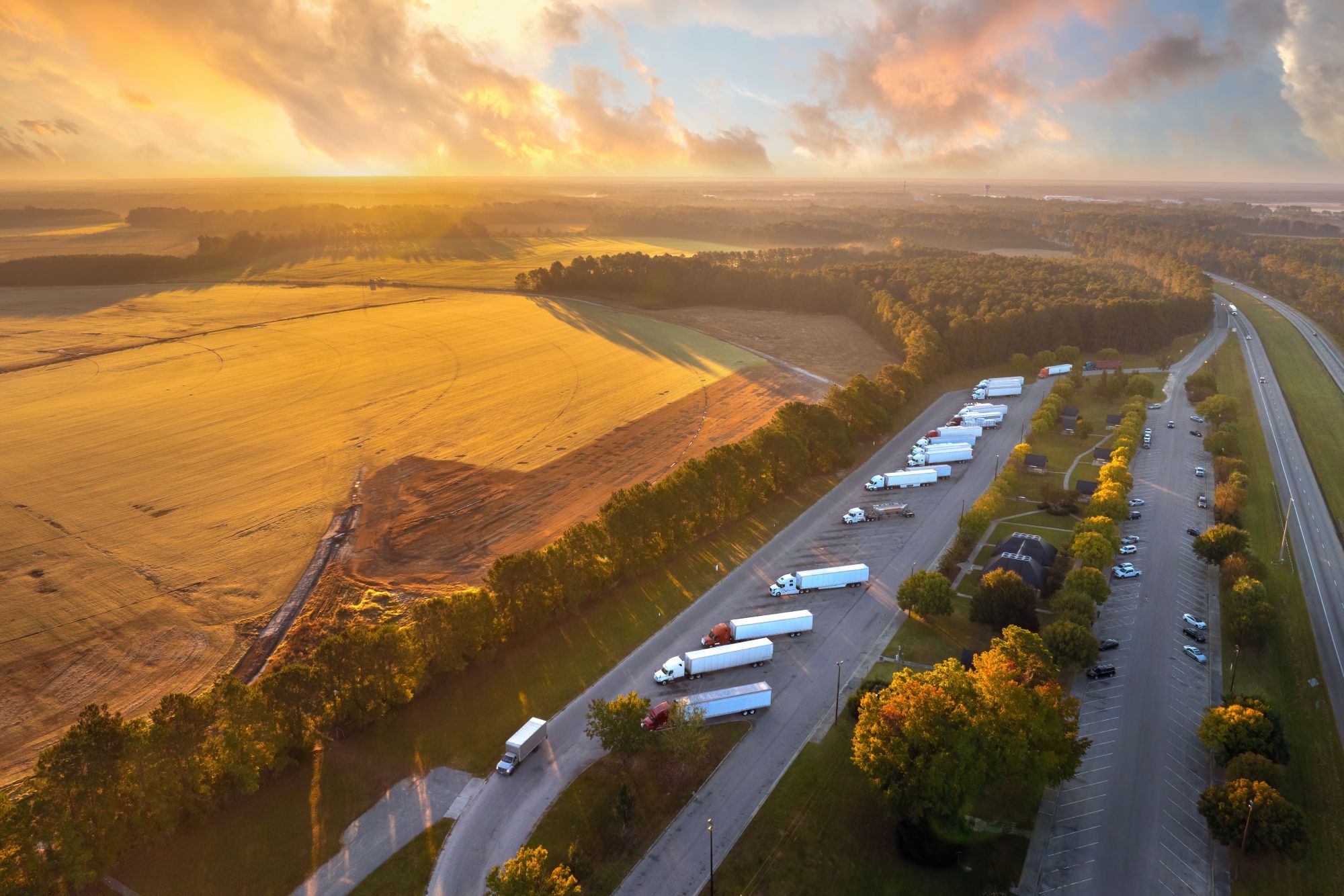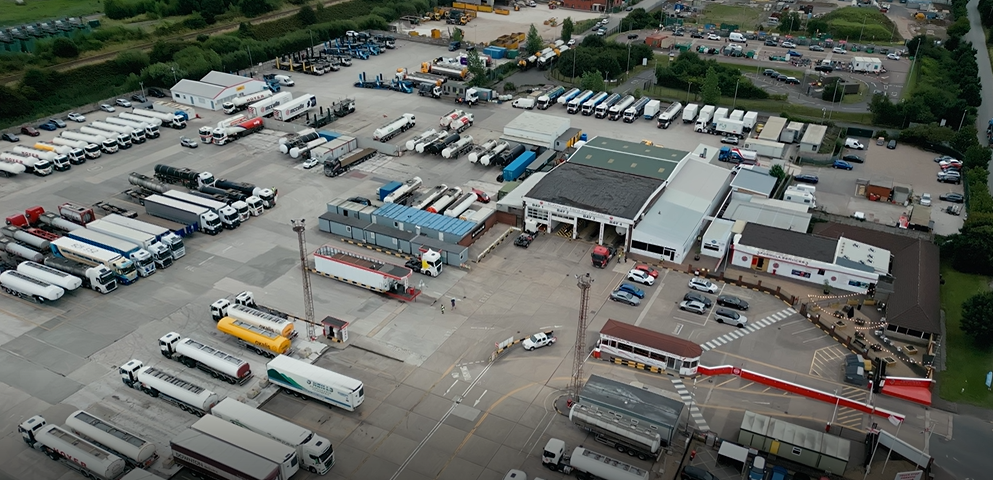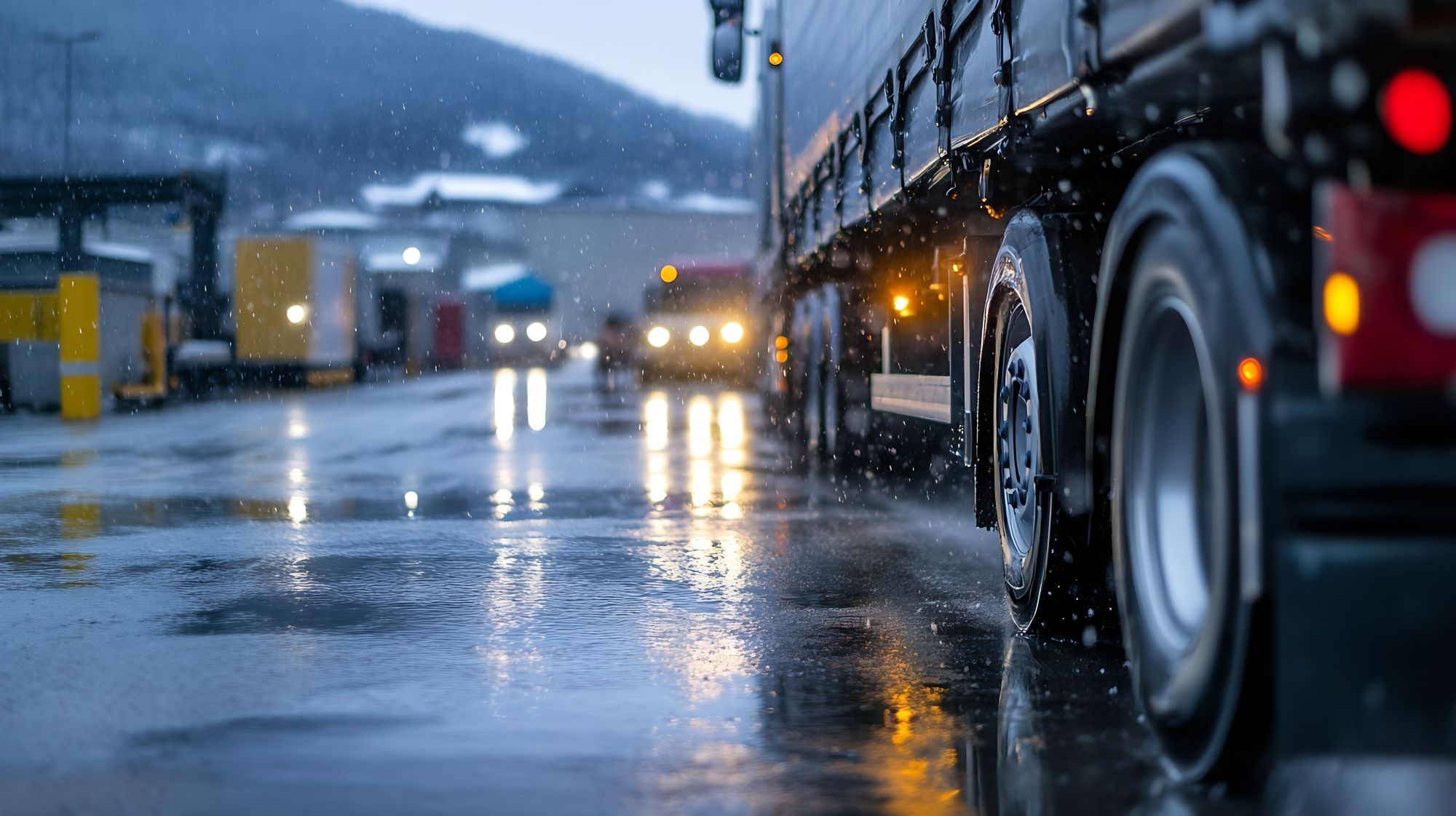
Miranda Blake
Práticas de condução seguras: Orientações essenciais para os camionistas de longo curso
Criado: 15/01/2025
•
Atualizado: 15/01/2025
Como motorista de camião, é crucial que esteja sempre seguro ao volante. Mas - com condições climatéricas extremas e rotas longas por toda a Europa - como pode garantir que causa um impacto positivo?
Neste artigo, descrevemos orientações essenciais para que possa dar prioridade à sua segurança e à dos outros.
Planeamento e preparação
Em primeiro lugar, deve certificar-se de que tem tudo pronto antes de partir.
Organização da viagem
Planeie cuidadosamente o seu percurso com antecedência, tendo em conta factores como as condições meteorológicas, a construção de estradas e os potenciais perigos. É uma boa ideia utilizar tecnologias como o GPS e aplicações meteorológicas para se manter informado sobre a sua viagem. Também deve planear paragens para descansar, reabastecer e comer. Desta forma, garante que mantém um horário consistente sem comprometer a segurança.
Inspecções de veículos
Antes de se fazer à estrada, faça uma inspeção completa do seu camião antes da viagem. Verifique o seguinte:
Pneus com pressão e desgaste adequados
Travões para um desempenho ótimo
Luzes e sinais de funcionalidade
Níveis de fluidos (óleo, líquido de refrigeração, líquido dos travões, etc.)
Espelhos para um ajuste correto
Fixação da carga
Ao avaliar regularmente estes aspectos, pode identificar potenciais problemas antes que estes se transformem em problemas graves.
Práticas de condução segura na estrada
A sua implementação é igualmente crucial depois de ter posto o motor a trabalhar.
Gestão da fadiga
Este é um fator de risco significativo para os camionistas de longo curso como você. Para o combater, recomendamos:
Cumprimento das regras relativas ao [horário de trabalho dos condutores] (https://www.gov.uk/drivers-hours/eu-rules)
Fazer pausas regulares - mesmo que não se sinta cansado
Reconhecer sinais de fadiga e encostar para descansar quando necessário
Manter um horário de sono consistente sempre que possível
Condução defensiva
Também é aconselhável adotar uma mentalidade de condução defensiva para antecipar e evitar potenciais perigos. Algumas ideias são:
Assegurar uma distância de segurança
Estar consciente dos seus ângulos mortos
Evitar mudanças frequentes de faixa de rodagem e sinalizar com bastante antecedência
Ajustar a velocidade de acordo com as condições da estrada e do tempo
Estar preparado para as acções dos outros condutores
Gestão da velocidade
No que se refere à questão de manter uma velocidade segura e constante, deve fazê-lo:
Cumpra sempre as restrições, especialmente em áreas com limites de velocidade reduzidos para camiões.
Reduzir a velocidade nas curvas, nas zonas de trabalho e em condições climatéricas adversas.
Utilize travões auxiliares em descidas acentuadas para evitar o sobreaquecimento.
Manutenção e segurança dos veículos
Outra questão importante para a segurança dos camiões de longo curso é a manutenção e a proteção do seu camião.
Manutenção regular
Deverá seguir um calendário rigoroso para manter o seu veículo em óptimas condições. Por exemplo, através de:
Efetuar mudanças de óleo e verificações de fluidos frequentes
Inspeção e manutenção do sistema de travões
Monitorização da pressão e do estado dos pneus
Manter o sistema elétrico em boas condições de funcionamento
Resolver prontamente quaisquer problemas para evitar avarias na estrada
Segurança da carga
Da mesma forma, será fundamental garantir a segurança da sua carga. Para tal, basta
Utilização de amarras e dispositivos de segurança adequados
Distribuir a carga uniformemente
Verificar novamente a fixação da carga durante as paragens, especialmente após uma travagem brusca ou curvas apertadas
Segurança do camião
Com a [proteção do seu veículo] (https://snapacc.com/newsroom/tips-for-keeping-your-vehicle-secure-protecting-your-truck-from-theft/) em cima da sua carga, recomenda-se que o faça:
Estacionar em zonas bem iluminadas e com elevada segurança quando parar para descansar.
Utilizar dispositivos antirroubo e mecanismos de bloqueio.
Esteja atento e comunique qualquer atividade suspeita.
Sensibilização para o estado do tempo e da estrada
Como camionista de longo curso, terá também de se preparar para várias condições relacionadas com o clima e as estradas. Por exemplo, considere:
Manter-se informado sobre as previsões ao longo do seu percurso
Ajustar a sua condução ou adiar a sua viagem nos elementos mais extremos
Transportar o equipamento necessário (correntes, kit de emergência, etc.) para diferentes condições climatéricas
Proceder com cuidado extra em áreas desconhecidas ou propensas a perigos específicos
Saúde e bem-estar
Manter a [boa saúde] (https://snapacc.com/newsroom/how-to-be-a-healthy-truck-driver/) é igualmente crucial para uma condução segura. Por isso, certifique-se de que:
Fazer exames de saúde regulares e obter todos os atestados médicos necessários.
Fazer uma dieta equilibrada e manter-se hidratado.
Exercício físico sempre que possível - mesmo que seja apenas alongamento durante os intervalos.
Gerir o stress através de técnicas de relaxamento ou passatempos durante o tempo de inatividade.
Condução segura com o SNAP
Outra forma de aumentar a segurança é através da nossa [aplicação intruck] (https://intruckapp.com/download/). Esta aplicação permite que os condutores de camiões como você paguem por vários serviços, como estacionamento, lavagem, combustível e muito mais. Ao eliminar as transacções em dinheiro, limita as distracções.
Além disso, muitos locais apresentam medidas de segurança reforçadas, pelo que terá a certeza de que o seu veículo está seguro enquanto faz as pausas necessárias. E como a nossa aplicação permite aos utilizadores reservar lugares de estacionamento com antecedência, terá a tranquilidade de saber que haverá um lugar seguro para descansar depois de longas horas na estrada.
Lembre-se: as práticas de condução segura não são apenas diretrizes; são princípios essenciais que todos os camionistas de longo curso devem adotar como parte da sua ética profissional. Ao dar prioridade à segurança através de um planeamento cuidadoso, de uma condução vigilante, de uma manutenção adequada e do recurso a tecnologias como o intruck, pode reduzir significativamente os riscos associados à sua exigente profissão.
Para saber mais, entre em contacto com a nossa equipa através do número +44 (0)1603 777242.



